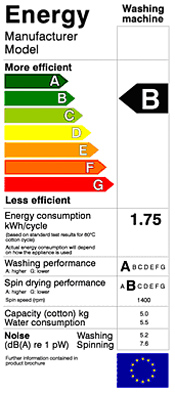OPINION: Have Plasma TVs Been Outlawed in Europe?
New power consumption regulations could create a problem for some plasma displays according to Paul Gray, Director of European TV Research DisplaySearch.
There has been a lot of coverage in the media about plasma display panel (PDP) TV sets being banned in the EU. Some of the headlines in the UK that I have seen include:
Energy-guzzling plasma TVs could be banned in Brussels eco blitz
This article notes that the plasma screen television is poised to become the next victim of the battle to curb energy use. Giant energy-guzzling flat screens are expected to be banned under legislation due to be agreed by the EU this spring. Plasma screens have been nicknamed the '4x4s' of the living room because they use up to four times as much electricity and are responsible for up to four times as much carbon dioxide as traditional cathode ray tube sets.
Some EU Plasma TVs to Go the Way of the Dodo Bird
The article noted that from speaking to a newspaper, government ministers in Britain intend to ban giant flat screen plasma TVs that don't meet stringent energy efficiency requirements. It sounds draconian, but apparently it's all with the goal of protecting the environment.
Now the EU wants to ban your plasma
The article lead indicates that plasma screen televisions which guzzle power are set to be banned under EU guidelines to curb people's energy consumption. In its battle against global warming the EU wants to phase out the most inefficient TVs
While these articles make for great headlines, especially in the Euro-skeptic elements of the British press, the news itself is simply not true.

Here's a quick recap of what has been stated:
- • Minimum energy efficiency standards for TV sets creating a power consumption limit proportional to screen area. This is essentially similar to the California Energy Commission draft proposal.
- • Require a mandatory Eco labeling system at point of sale, which allows consumers to understand energy consumption when choosing products. This will be compulsory. These labels are familiar to EU residents, as they are currently used on white goods and cars. See an example from a washing machine to the right.
- • There is also a mandatory requirement to reduce standby power consumption below 1 Watt, something that set makers have generally addressed a year or so ago. A one-year grace period has just started to enable set makers to take action.
Noah Horowitz, a scientist with the United States' Natural Resources Defense Council, remarked that the draft European TV efficiency standard was "not very aggressive" when compared to the California Energy Commission proposal.
Some years ago I compared energy efficiency on LCD TVs. The best I found was a Sony, with a standby power well under 1W. The worst used an astounding 28W on standby and also made all kinds of noise even when 'off' if a cell phone was nearby; clearly showing the chassis was powered up. The draft regulations will prohibit energy-inefficient designs such as this. Interestingly the savings in electricity more than paid for the extra for the Sony set within five years.
The new power consumption regulations could create a problem for the most inefficient sets, but technologies like Panasonic's Neo-PDP should keep PDP in the game if panel makers choose to invest. However, it may well raise the bar on PDP manufacturing and force another round of investment in new PDP drive technologies.
The proposals are in draft form, but are not specific to any display technology. So PDP is not being banned, but inefficient PDP sets are. The draft is due to be published in April 2009.
The professional video industry's #1 source for news, trends and product and tech information. Sign up below.
